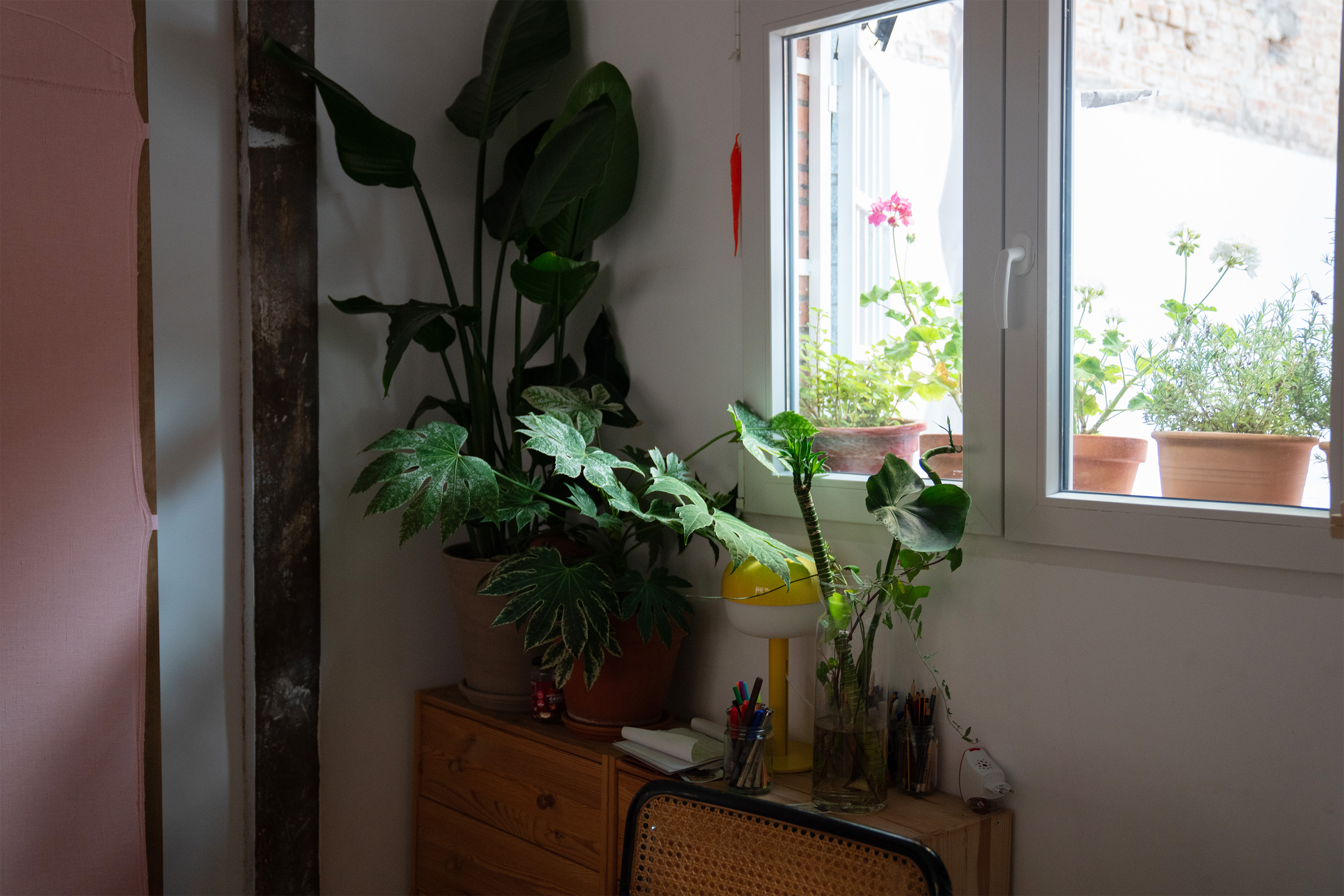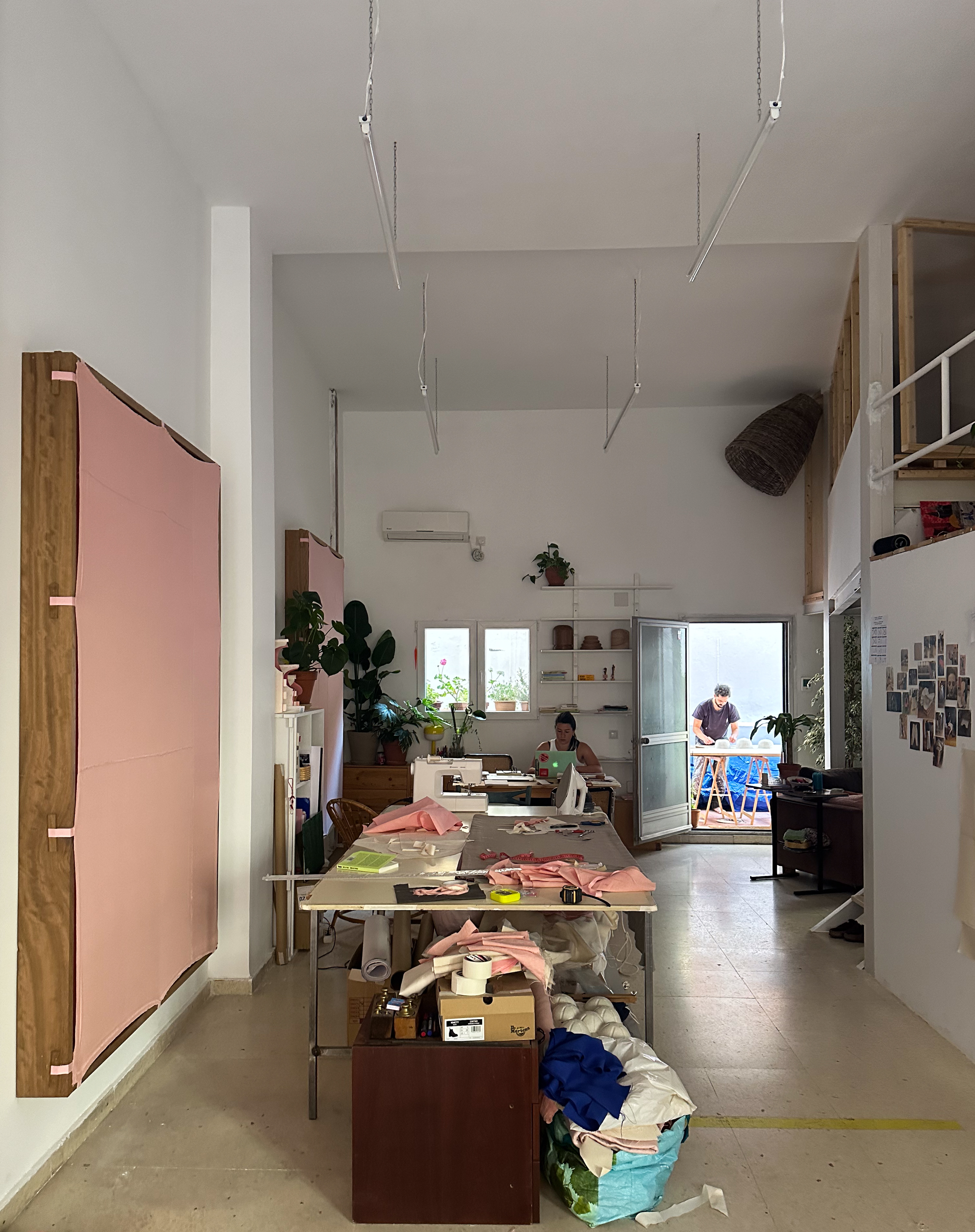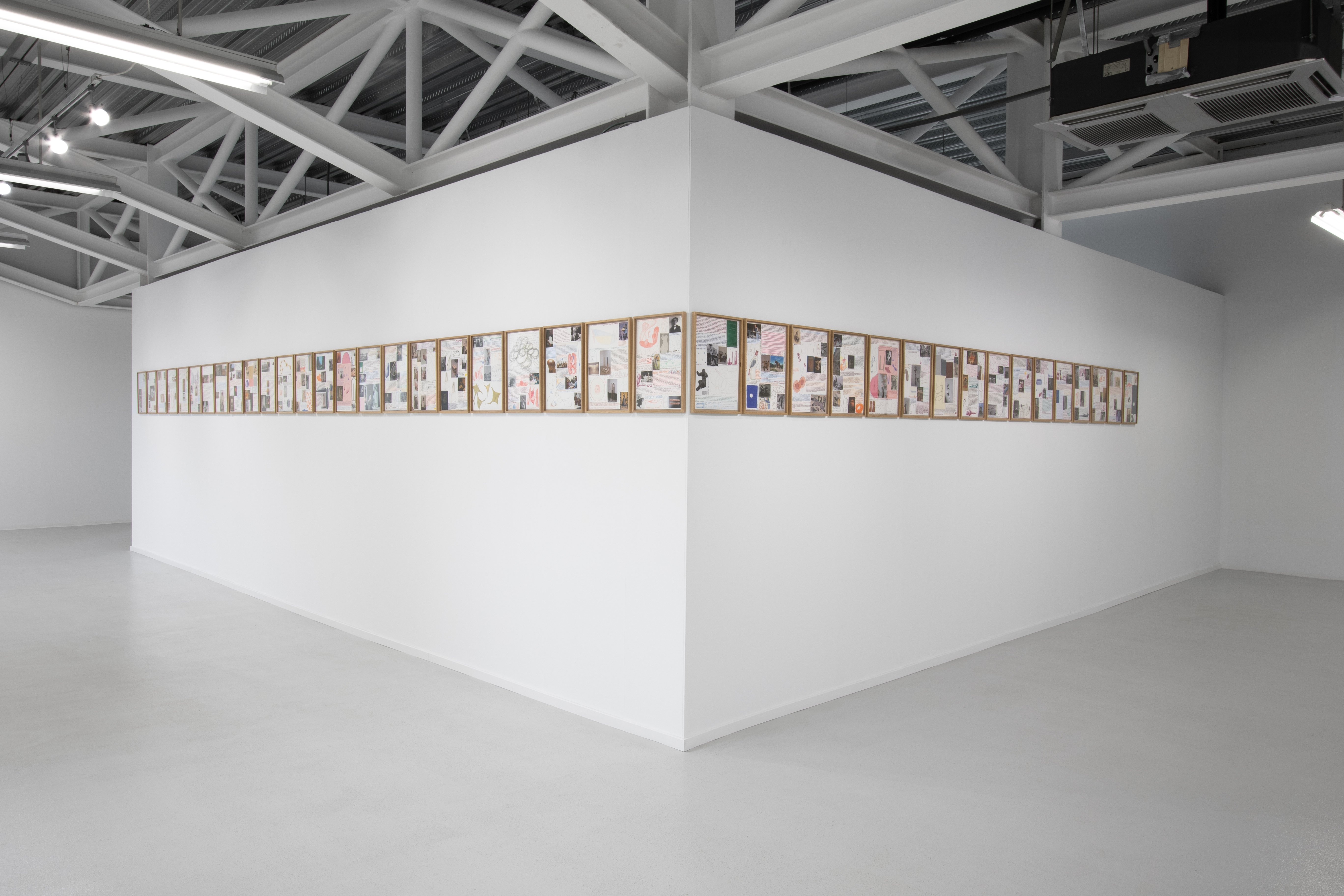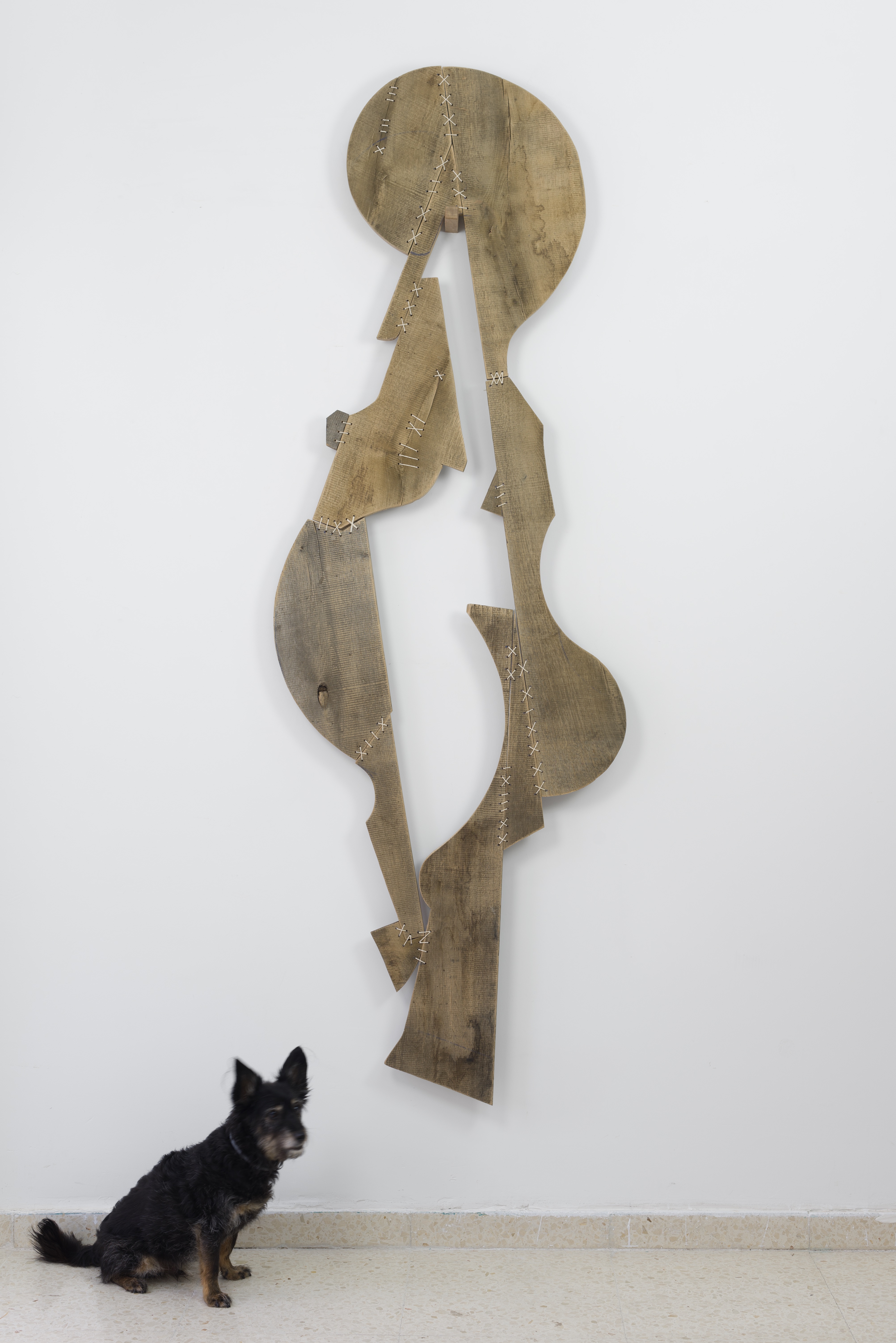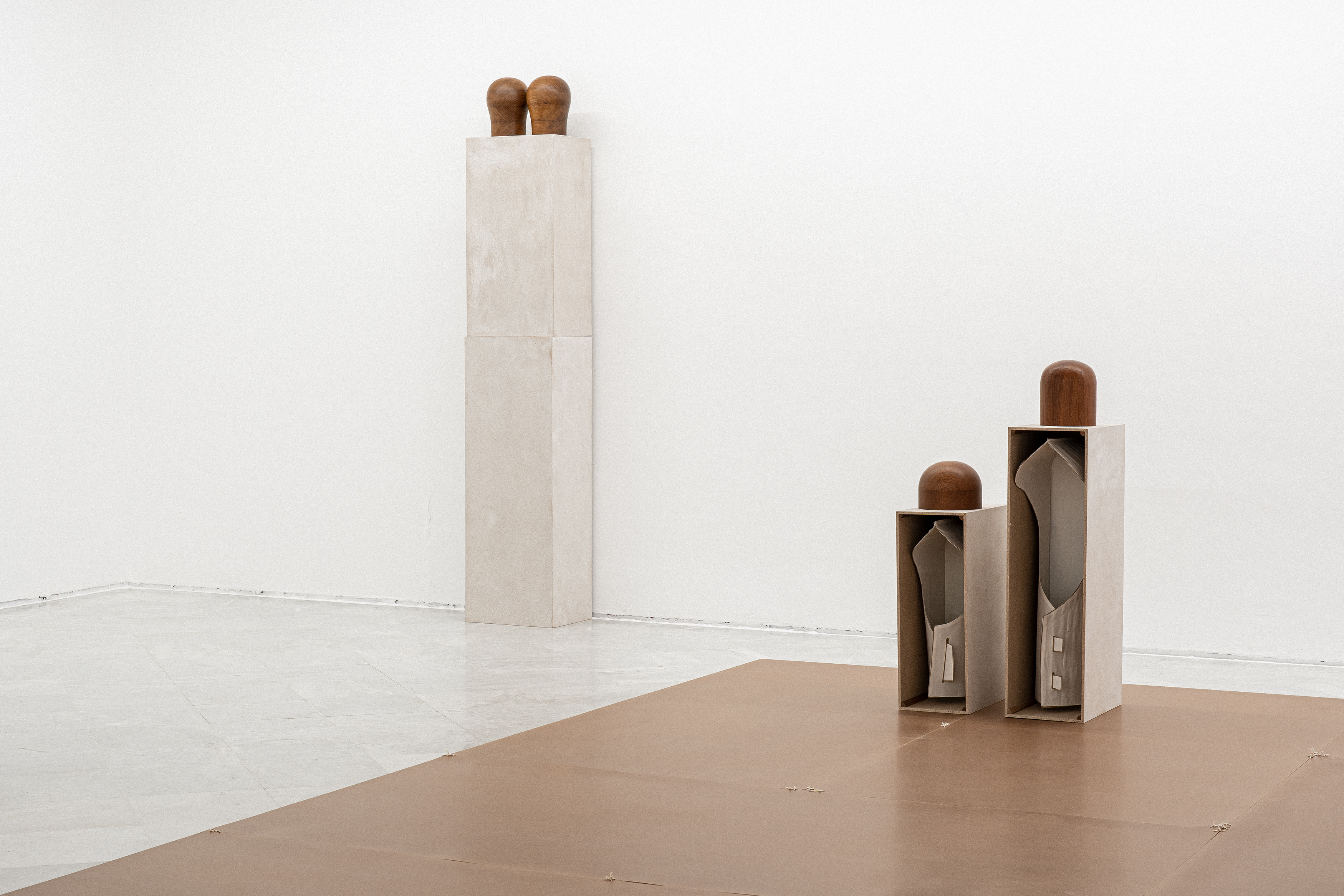In June 2024, I met the Cádiz-born artists who make up the artistic couple Fuentesal Arenillas at their studio in Carabanchel. Julia and Pablo welcomed me around their worktable, with the studio doors open to the patio, where the afternoon sun illuminated sculptures in progress, dusted with plaster and sheltered by a giant linen canopy. We talked for over an hour in a conversation I have revisited many times while editing this interview. Stories about their artistic practice intertwined with reflections on their personal growth over the past few years of travels and relocations, which have taken them through Sevilla, Cádiz, London, Berlin, Madrid, and as residents at the Royal Spanish Academy in Rome.
As our conversation unfolded, it became clear that Julia and Pablo’s work is rooted in an exploration of the everyday, the ephemeral, and the intimate. Their collaborative practice fuses a sensitivity toward light materials, such as linen or plaster, with a reflection on space and movement, both within the studio and in the exhibition space. For them, the creative process is as vital as the result: a choreography between the manual and the conceptual, where ideas, gestures, and mistakes intertwine to give life to pieces that seem to hover between the physical and the metaphysical. Each sculpture carries the memory of the place where it was conceived, the shared time in the studio, and a constant intention to capture the imperceptible—like the delicate flight of a butterfly or the space shaped by the shadow of a hat.
Here is what remains of that sunny recording:

Hi, Julia and Pablo! First of all, I’d love to know: how did the idea of working as an artistic duo come about?
Sure, it was something that came about naturally and has evolved ever since. We met while studying Fine Arts in Seville. At that time, each of us had our own artistic practice: Julia was focused on sculpture, and Pablo on painting, although neither of us had a clear idea of what we wanted to pursue at first.
During our studies, we crossed paths a few times, but it wasn’t until our fourth year that we got to know each other better and started dating. From that point on, we began collaborating on some projects, initially as part of university assignments. We discovered that working together came naturally to us, and even our professors remarked on how well we worked as a team, appreciating the collective dynamic we generated.
We were part of the first cohort under the Bologna Plan, a key moment in university education. While some older professors struggled to adapt, fortunately, newer faculty members with active contemporary practices joined the program. This was crucial for us, especially thanks to Professor Miguel Rosado, who, alongside his brother, forms the artistic duo MP & MP Rosado. Their approach helped us better understand how contemporary art functioned in Europe and America—something not so common in the University of Seville at the time. Their connection to the professional art world outside the university, as well as their ability to communicate this knowledge, opened our minds and made us realize that pursuing a joint artistic practice was indeed possible.

I’m curious about how your collaborative process works. Does one of you come up with an idea and share it with the other, or is it more fluid?
When it comes to working as a duo, our process is very fluid. For example, in the studio, one of us might be outside in the courtyard working on certain pieces while the other is indoors focusing on others. Everything is agreed upon beforehand. The key is to talk a lot, think, discuss, experiment, make mistakes, and keep trying.
Working as a duo has an interesting aspect: a lot gets discarded. Many ideas never come to fruition because we can’t agree on them. This creates a sort of "creative funnel," where ideas pass through a very narrow filter. But when we finally bring a piece to completion, it’s been thoroughly developed. We’re not sure if "four hands" work faster than "two." Perhaps when it comes to the manual side, yes, but conceptually, the process is slower. Nevertheless, this dynamic has allowed us to build a solid methodology over the past eleven years of working together.
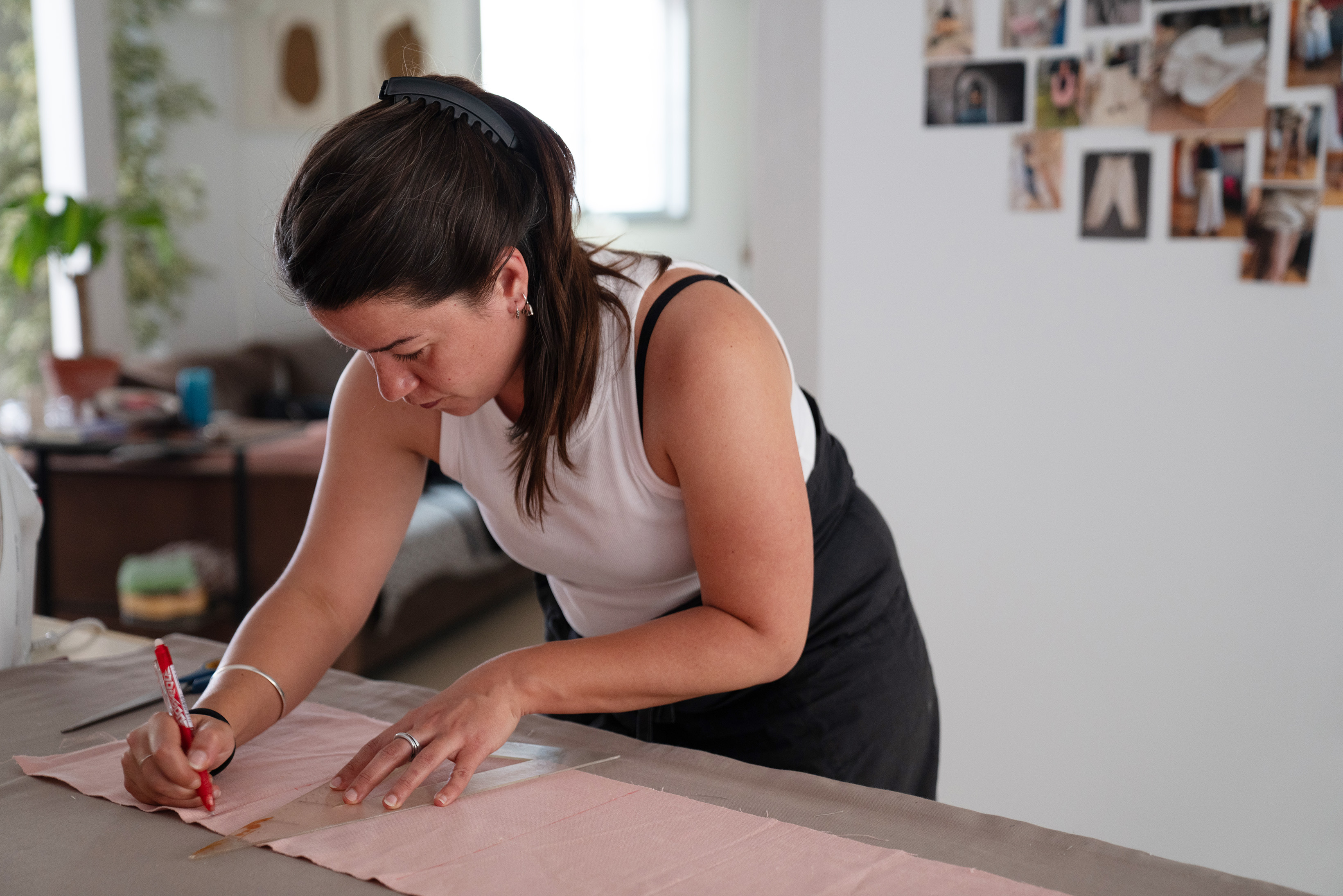
Does your personal relationship translate into your practice in any way?
In the end, we started by working in a very autobiographical way, and we still do. Many of our pieces are related to our experience as a couple, the repetition that comes with working together, and especially what happens within the studio. In that space, a series of movements unfold that are fundamental to us. It’s a kind of interplay between sculpture and a certain performativity, though that performativity mainly manifests in the creation process. By the time the piece is installed in an exhibition space, it has already reached its penultimate movement.
Our process is like placing fish in an aquarium: as the aquarium grows, so do the fish. Similarly, we work with the tools and materials available to us and adapt to the space we’re in. The body is always present in our work, but it’s not explicitly represented. Instead, the body acts as an extension of our ideas, reaching the limits of what we can achieve physically and conceptually.
This connects to our relationship with size, proportion, and the spatial interaction of our pieces. The materials we use aren’t defined solely by the size of the works but by what we can do with them, how we handle them, and what we know about them.

What role does "the object" play in your work? How do you understand it, and what meanings do you attribute to it?
Our work has a close relationship with the objects around us or those we remember. For us, it’s essential to understand the work within certain horizons that also exist in the studio. For example, we’ve always said that, as kids, we grew up seeing the horizon at sea, but in the studio, the horizon is found on the tables and in the elements that create different planes.
This makes us think that things can be simpler than they seem. We’re at a point where objects support us and surround us, but there’s always a relationship with the table that we find crucial. When we work on the table, a visible stage is created, but at the same time, there’s another plane—what’s beneath the table—like the movements of elements or even our legs. These movements, which escape our comprehension, interest us because we believe that in this hidden space is where things truly happen. It’s the origin of what’s really going on.
In our work, materials also play an important role in this lack of control over what we’re doing. We work with objects that shelter and accompany us, like a hat or a pocket. A hat, for instance, rests on the head, creating a space. It’s not a closed space, but it casts a shadow and acts as a protective garment, shielding you from the sun while creating a space of protection and delimitation that moves with you. This concept of protection and space is something we want to explore. It’s not just about the object’s functionality but the space it creates when worn or placed on you—a space that moves with you and becomes an extension of yourself. It’s not just the form of these objects but how they act in our daily lives, activated in ways we’re not even conscious of.

Does portability play a significant role in your choice of such lightweight materials? What meanings or possibilities does this characteristic bring?
Portability is very important to us. We’re drawn to things that fold, can be stored, and then unfold again later, like a tent that can be dismantled and reassembled.
Our work is never heavy or permanently anchored to the ground. Quite the opposite: we’re interested in volume that rises with the help of another, like a story being built and then fading away. This idea is closely tied to our conception of sculpture and artistic practice in general. For us, exhibitions aren’t just displays—they’re like moving houses. The work stays in a place for a certain time and then disappears, like moving out of a home. You bring all your things, explain them, and then, at some point, you leave, and those things go with the process.
Oftentimes, something doesn’t need to last; it just needs to be told. It’s like a puppet show in a plaza: a story is activated, everything is packed up, and it’s taken elsewhere. That’s what we aspire to with our work—a theater of objects that unfolds in one space and then transforms to continue elsewhere.
Can we talk about a "metaphysical" aspect of your practice?
Something between the metaphysical and the extremely physical, yes. We are searching for that simplicity, that almost imperceptible gesture that happens during the creative process and repeats itself, like the movement of a butterfly that, with the sway of our hands, stops, stays suspended for a moment, and then continues on its way. That is what we are searching for, and although we don’t yet know how to fully translate it into our sculptures, it’s present in small things, like in two mussel shells. That’s the image, the gesture that encapsulates and summarizes our practice: the flight of a butterfly captured in two shells.
The key lies in the gesture. It’s fascinating how such a simple gesture can transform something, creating an action or movement. What we aim for is that our work transmits that transformation—so that, with just that gesture, the viewer can see everything behind it. Our sculptures have volume, they occupy space, but achieving something so simple as a gesture, with such a light presence, is much harder to capture. It’s as though we’re trying to represent something that’s inherently difficult to grasp—like life itself. There’s a mixture of the material, the tangible, and the metaphysical. That tension is what keeps us on edge, in constant pursuit. And that pursuit, that constant exploration of how to express what we want to communicate, is what generates our work. The work happens within that very search.
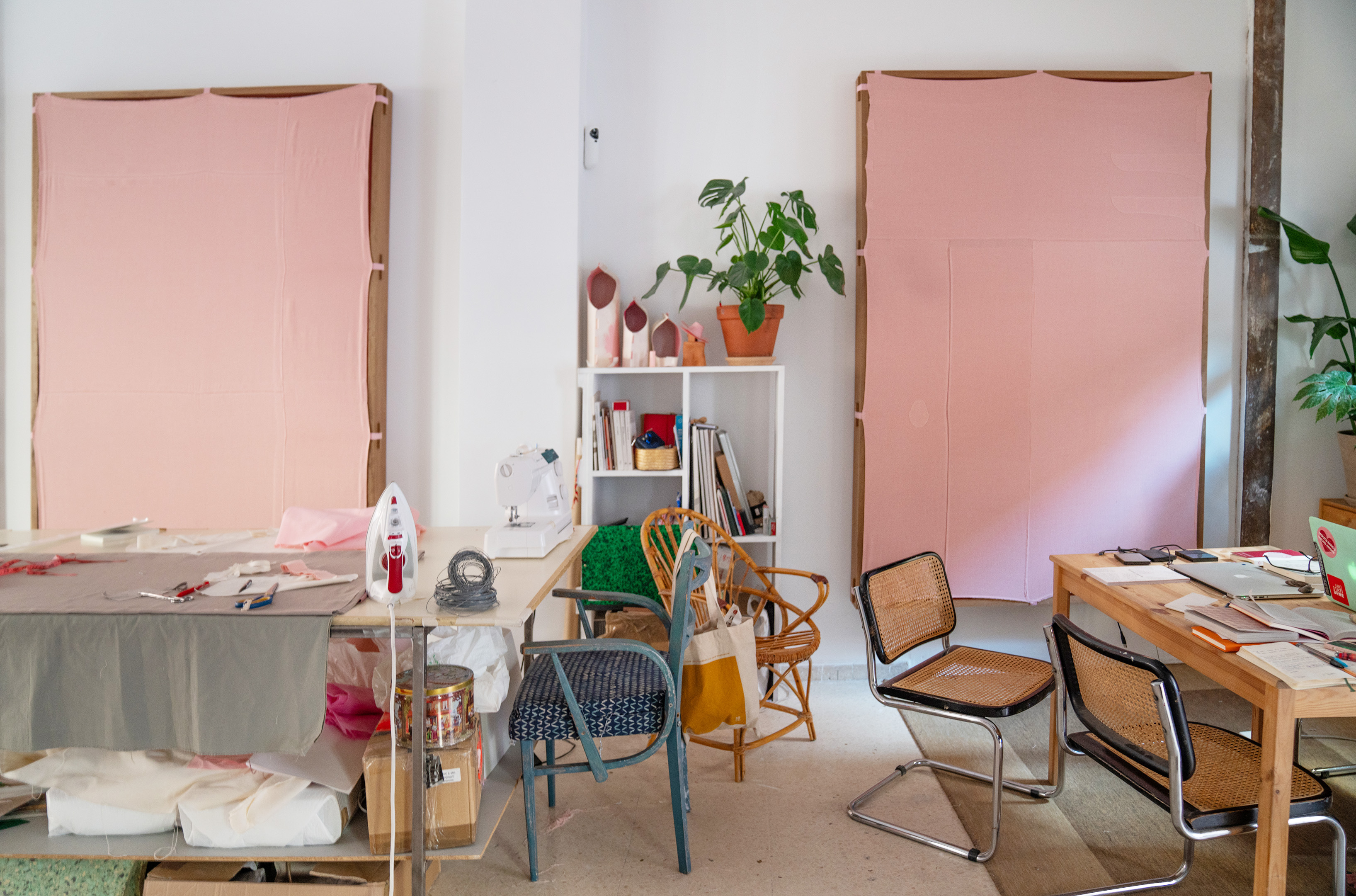
How do you manage to bring a sense of lightness into the exhibition space, maintaining the essence of your pieces in a structured, fixed environment?
For example, right now we are working on a solo exhibition that will be presented next year at Conde Duque in Madrid, in the “Sala de Bóvedas.” This is a space consisting of five stone vaults and heavy underground arches. At first, we wondered how we would approach such a prominent, dark, and weighty space. When we created a model, we realized we weren’t just working on a representation to distribute the pieces in the space; the model itself became a piece—a letter.
It moves around the studio, and those movements free us; they allow us to think differently, as if they deactivate the heaviness of the space.
You’ve mentioned several times the use of lightweight materials, a choice often interpreted as a response to the rigidity of structures traditionally associated with a masculine vision. What are your thoughts on this? Would you say your creations convey such a statement?
That interpretation makes a lot of sense. There is indeed a contradiction between vigor and lightness, but we believe that, in our practice, this contradiction connects to our roots. We’ve spoken about our interest in the Basque school, especially artists like Oteiza, who worked with voids and masses through heavy, cast volumes. But we also highlight other fascinating works like El Laboratorio de Tizas. Or more recent practices by artists like Ángel Bados or the Catalan Susana Solano, where we began to see new approaches to handling materials and their uses in sculpture.
That sculptural tradition from the north—heavy, grounded, somewhat monumental—contrasts with our lighter, more narrative approach, which feels more rooted in the South.
In Andalusia, sculpture isn’t as tied to a contemporary school of concepts and materials as it is in the Basque Country. From our perspective, Andalusian sculpture is more volatile, more about events and promenades. It’s like a traveling tent that gets folded up and set up again in a plaza. The materials are drawn from whatever is within arm’s reach—from the kitchen table to a parasol shading you from the sun. That’s where we see the intellectuality of the environment and the people within it: it’s a transmitter of volumes capable of altering an output signal in response to an input signal that chases you and jumps from table to table.
We’re especially interested in the Brazilian generational moment of the ’60s and ’70s, like Clark, Sica, or Medalla, who used their practices to reflect on the contemporary contexts they saw and lived in. That connection is clear, and ultimately, our practice fits into that same current, though each with its own interests and focuses.
For instance, we work a lot with materials that surround us—what many might consider "waste," though we prefer to call them “scraps.” These scraps, though they might seem like leftovers, hold great value for us. They’re part of our way of working: we take the leftover piece, we use it, and through that use, we generate a cut, a loss. That loss in sculpture is something we find deeply compelling.
In the end, losing volume, that disappearance of the sculpture, is closely tied to performance. Performance isn’t just an act that happens—it disappears in the act of being performed. And in our practice, losing volume is a performative act. By working on the leftover material until it disappears, we create a direct connection between sculpture and performance, because, in a way, the sculpture also vanishes during its creation process. That’s what fascinates us the most: losing the sculpture, losing the volume, as a constant act of transformation.
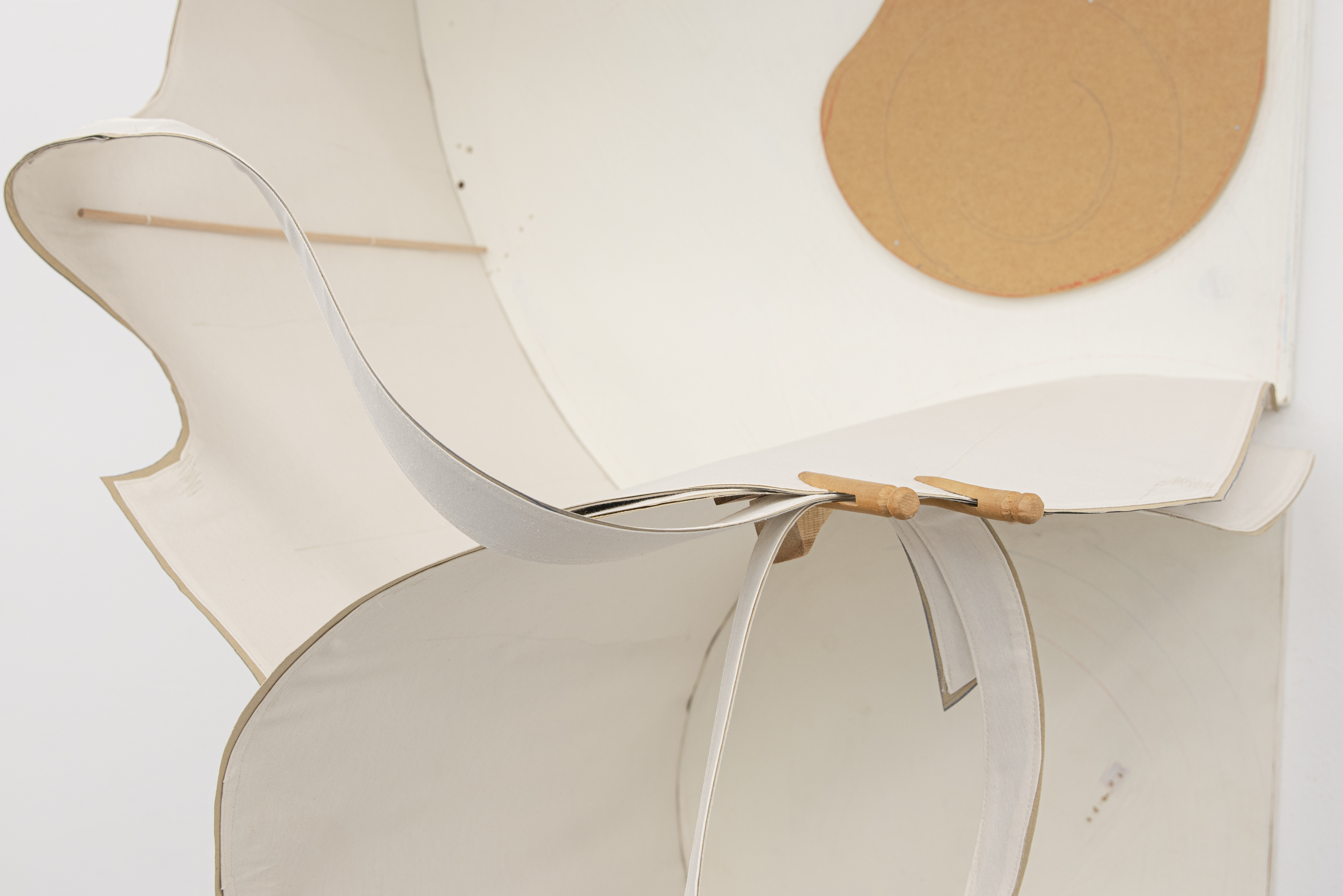
You’ve mentioned the Andalusian aspect of your proposals. Would you say there’s a direct reference or reflection on this culture in your artistic practice, or is it more implicit?
It’s something that’s there, but not as an explicit declaration. We don’t necessarily talk about Andalusian culture in literal or direct terms. The Andalusian aspect isn’t necessarily on the surface, but it’s present in the way we do things, in our memories, in the way we communicate.
For instance, the horizon—a recurring element for us—isn’t exclusive to Andalusia, but the horizon we know, the one we saw when walking to school, is the one that defines and marks us. It’s a way of linking our practice to our land without needing to explicitly state it. There’s something Andalusian that, while not overtly declared, is reflected in how we understand art and the world.
And, of course, there’s always a reference to Andalusian artists who influence us, like Pepe Espaliú, Ocaña, or Miguel Benlloch. Sometimes the practices that interest us carry a bit of that sentiment, of what they represent in their Andalusian context. While our work may not align directly with those practices, we share a common heritage that reflects in our way of creating. Even after spending so much time outside of Andalusia, that connection remains present and continues to be a fundamental component of how we understand art and our practice.
The concept of "home" seems to be very present in your discourse, especially as you refer to the studio as one. Additionally, working as a couple, that relationship must be even more intimate. Do you think there’s something of "home" for you in your pieces?
Yes, absolutely. The connection to the house and the home is very present in our practice. It’s something that goes beyond creating a physical space; it’s an emotional, intimate connection. The idea of feeling at home, of being comfortable with what we’re doing, is central to our pieces. It’s a place where we can be ourselves, where the work flows without the barriers that the outside world sometimes imposes.
This is reflected in many of our pieces, where we introduce personal elements, like autobiographical photos or family images. These are fragments of our daily lives, of what surrounds us, and they materialize in the work. In a way, we try to transfer that sense of home into our sculptures, as if the pieces could offer a space of refuge, of inner peace.
Interview by Whataboutvic. 13.01.2025.

